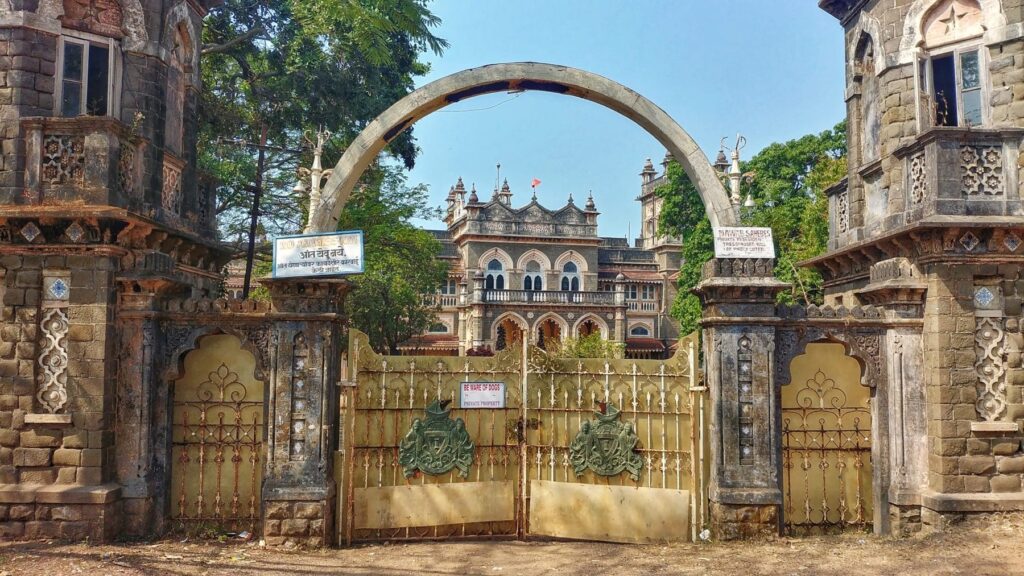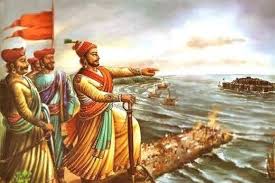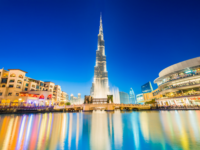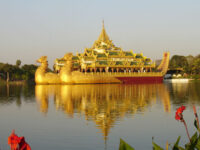Murud Janjira Fort, located off the western coast of India, stands as a powerful testament to the country’s rich maritime history. It’s one of the most intriguing and mysterious forts on the Indian coastline, not just because of its grand structure but because of the stories, legends, and historical events that surround it. Situated on an island in the Arabian Sea, Murud Janjira is a perfect example of strategic genius, architectural brilliance, and cultural heritage.
This fort, unlike many others in India that were built atop hills or on land, is unique in that it is set on a rocky island, making it almost impregnable to attacks during its time. The fort’s history, the architecture, the legends, and the sheer effort that went into constructing it, make it a significant part of India’s coastal heritage.
Location and Accessibility: A Fort in the Sea

Murud Janjira Fort is located in the Raigad district of Maharashtra, India, on a small island off the coastal town of Murud. It sits about 1.5 kilometers (1 mile) from the shore and is accessible only by boat. The fort’s location on an island made it strategically difficult for enemy forces to approach, giving it a massive tactical advantage. Despite being surrounded by the sea, the fort is well-connected by sea routes from the nearby towns of Murud, Kashid, and Revdanda.
Reaching Murud Janjira requires a boat ride, which itself adds to the allure of the fort. The fort can be accessed from the small fishing village of Murud, which is a popular tourist destination in itself. Once you board a boat, the scenic beauty of the Arabian Sea and the surrounding beaches adds to the charm of the journey, making the experience of visiting the fort an unforgettable one.
The nearest major city is Mumbai, located about 165 kilometers away from Murud. From Mumbai, it takes around 4 to 5 hours to reach the Murud area by road, making it a convenient destination for a weekend getaway from the bustling city life.
The Historical Backdrop: Rise of the Siddis

The history of Murud Janjira Fort is inextricably tied to the Siddis, an African-descended group of people who became powerful rulers in the western coastal region of India. The fort was originally constructed in the 15th century by the Siddis, who were naval warriors and officials in the service of the Deccan Sultanates. They had been brought to India as slaves, but over time, they managed to carve out their own kingdoms and establish a powerful naval presence in the region.
The construction of the Murud Janjira Fort is believed to have begun in 1570 under the rule of Siddi Jauhar, a formidable Siddi ruler. He made the island his stronghold after realizing its strategic location. At the time, the fort was a symbol of the Siddis’ growing power and their naval dominance in the Arabian Sea. Over the years, the Siddis expanded their influence along the coastal regions, and Murud Janjira became a symbol of their power.
The fort was an important maritime base, providing the Siddis with the resources needed to defend their territories from Portuguese and Maratha attacks. The Marathas, who were rising to power in the Deccan region during the 17th century, frequently clashed with the Siddis for control of the coastline. Despite multiple attempts by the Marathas to capture the fort, the Siddis managed to retain control over Murud Janjira for over 200 years, making it one of the most well-defended forts in the country.
Architecture: A Fortress in the Sea
Murud Janjira Fort’s architecture is a marvel in itself, especially given its location on an island in the Arabian Sea. The fort is constructed using a combination of stone and masonry, with thick walls that rise high above the waterline. It is surrounded by water on all sides, adding an additional layer of defense that would have made it nearly impossible for enemies to breach.
The fort has a series of massive gates, which are the main point of entry. The Main Gate, or Khas Gate, is the largest and most important entrance. It was constructed in such a way that it could withstand naval bombardment and provide easy access for naval forces. The fort also has a watchtower that offers panoramic views of the surrounding sea and land, providing excellent surveillance of approaching enemy ships.
Inside the fort, you’ll find a series of small buildings, including a mosque, residential quarters, and a water reservoir. The mosque, built within the fort complex, reflects the region’s Islamic influence and stands as a reminder of the Siddis’ religious and cultural heritage. The water reservoir is another unique feature, as it was essential for the fort’s survival during long sieges. It’s said that the Siddis were able to withstand prolonged attacks due to their ability to store large quantities of water within the fort.
Perhaps the most striking feature of Murud Janjira is its walls. Standing tall and imposing, they serve as a reminder of the fort’s military might. The walls were built with thick stone blocks, ensuring that any attack would be deflected. The fort was equipped with several cannons and other artillery, and some of these weapons still remain on the fort’s premises today.
Despite its impressive architecture, Murud Janjira is not as well-known as some other forts in India, such as the Red Fort or the Agra Fort. However, it is no less significant in terms of its design and the effort that went into constructing it.
The Siege and the Marathas

One of the most fascinating chapters in the history of Murud Janjira is the repeated attempts by the Marathas to capture the fort. The Marathas, led by their fearless leader, Chhatrapati Shivaji Maharaj, were determined to wrest control of the fort from the Siddis. Shivaji’s naval forces, under the command of his trusted admiral, Tukaram, launched several attacks on the fort. However, despite their best efforts, the Marathas were unable to breach the fort’s walls. The Siddis’ strong naval fleet, reinforced by the fort’s inaccessibility and formidable defenses, made it nearly impossible for the Marathas to take control of Murud Janjira.
Shivaji, known for his strategic genius, eventually abandoned attempts to capture the fort, realizing that it was nearly impossible to overcome its defenses. Even though the Marathas tried repeatedly to capture Murud Janjira, the Siddis managed to hold on to it for over 200 years. It was only after the decline of the Siddis’ power that the fort was eventually abandoned, falling into disrepair.
The Decline of the Siddis and the Fort
As with most empires, the decline of the Siddis was inevitable. The rise of new powers, changing political alliances, and the weakening of the Siddis’ naval forces led to the gradual disintegration of their kingdom. By the early 19th century, the fort was no longer a significant military asset. The Siddis’ naval strength began to wane, and their kingdom became a shadow of its former self.
The British, who had gained control over most of India during the 18th and 19th centuries, eventually took control of the region. However, the fort never played a significant role in British colonial history, and Murud Janjira gradually faded into obscurity. The fort was left to decay over time, and many of its structures fell into ruin.
Despite this, Murud Janjira still holds immense historical and cultural significance. The fort’s remote location and the challenges of accessing it have helped preserve its architecture and history, and it remains one of the lesser-known but equally fascinating forts in India.
The Fort Today: A Hidden Gem
Today, Murud Janjira is a popular tourist destination, although it remains relatively less explored compared to other forts in India. The fort attracts history buffs, architecture enthusiasts, and adventure seekers who want to experience a piece of India’s maritime heritage. The boat ride to the fort, the scenic views, and the sense of isolation add to the charm of visiting the fort. It is a peaceful retreat from the hustle and bustle of urban life.
Visitors to the fort can explore its ruins, walk along its walls, and take in the stunning views of the Arabian Sea. The fort is also a great spot for photography, with its imposing structure set against the backdrop of the sea and sky. Though the fort is largely abandoned, it still has an aura of mystery and grandeur that draws visitors from around the world.
One of the most striking features of Murud Janjira today is its isolation. While many forts are located in urban or easily accessible areas, Murud Janjira’s remote location adds to its allure. It’s a place where you can truly imagine the fort’s historical significance and the strategic importance it once held. The lack of commercialization in the area also means that the fort retains its original charm and beauty, making it an ideal destination for those looking to escape the crowds and explore an off-the-beaten-path gem.
Conclusion: The Legacy of Murud Janjira
Murud Janjira Fort, though not as famous as some other forts in India, holds an important place in India’s history. From its construction by the Siddis to its role as a stronghold during the Maratha wars, the fort represents a fascinating chapter in India’s maritime history. Its architecture, strategic importance, and the stories of battles and sieges make it a captivating place to visit and learn about India’s coastal heritage.
For those interested in history, architecture, or simply seeking a quiet retreat, Murud Janjira is a hidden gem waiting to be discovered. As you explore its ruins and walk along its walls, you’re not just visiting a fort – you’re stepping into a living history, experiencing the legacy of a powerful maritime kingdom that once ruled the western coast of India.








































































































0 Comments